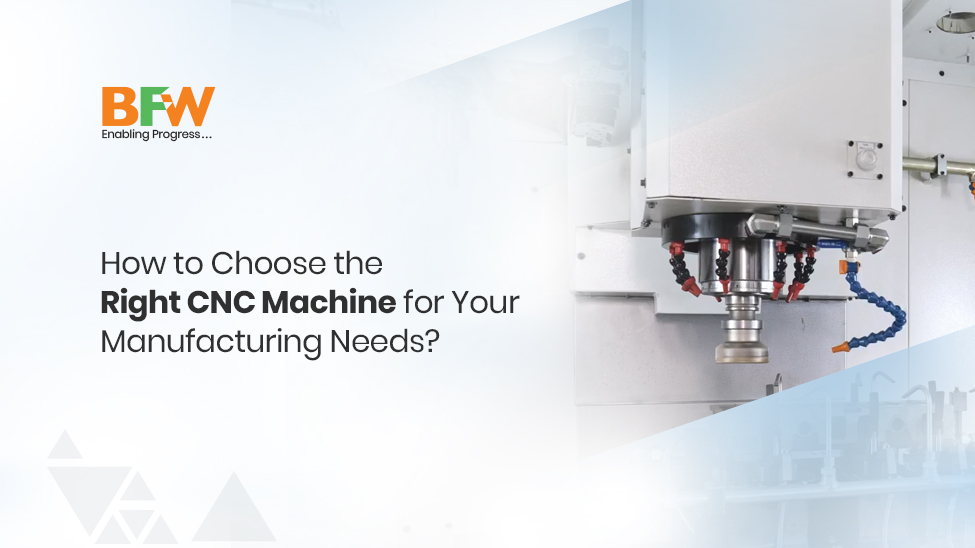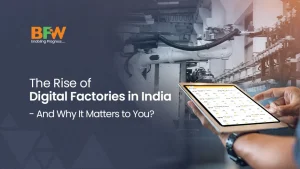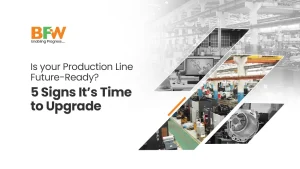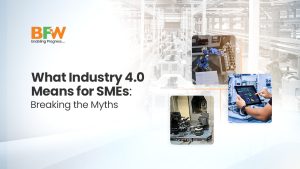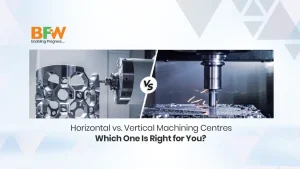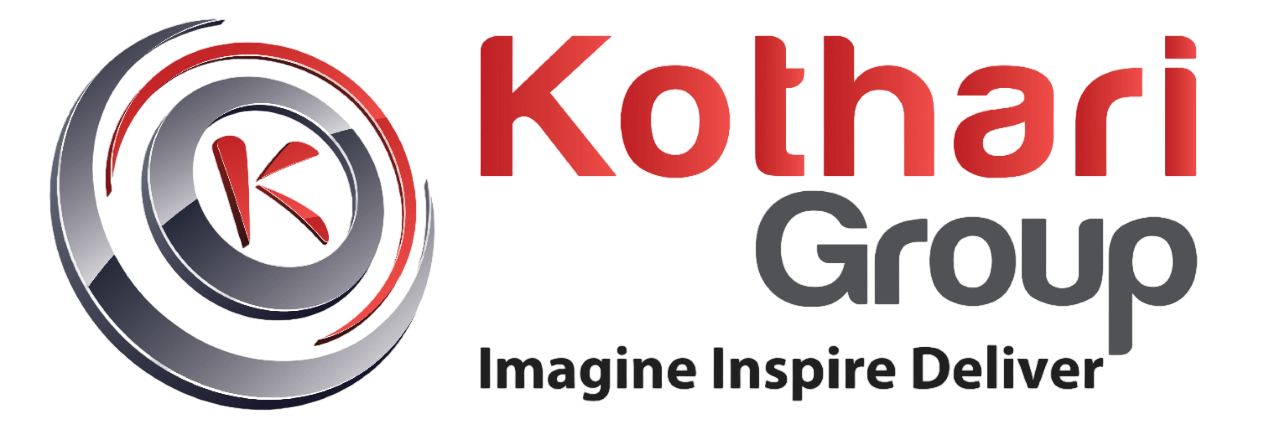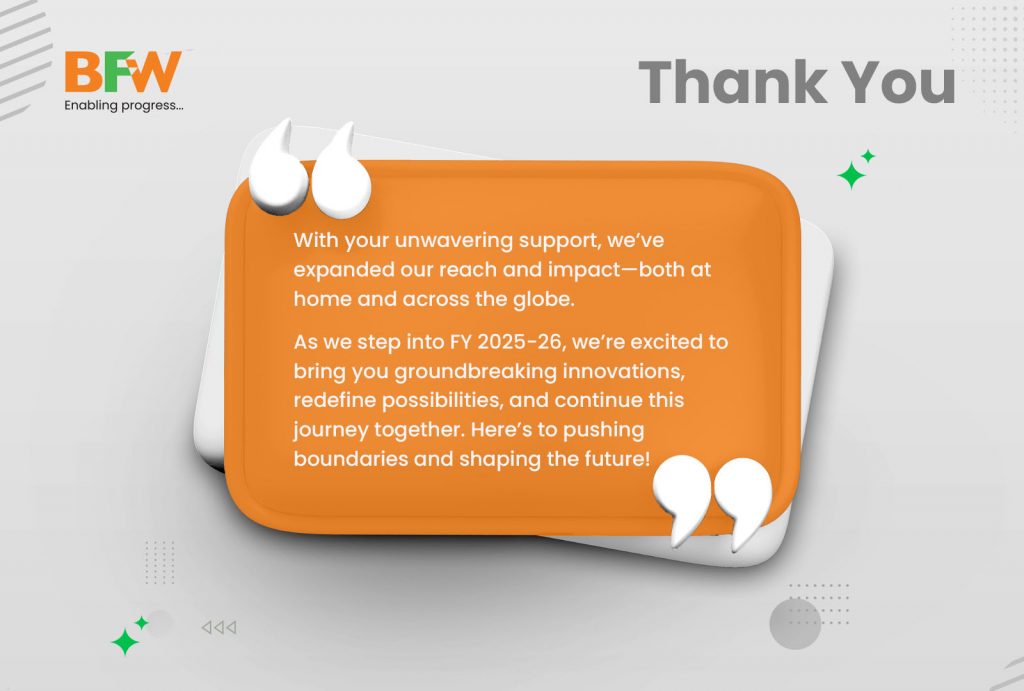“The real cost of a CNC machine isn’t what you pay – it’s what it limits you from doing next.”
Selecting the right CNC Machine for your plant is not just about getting the most advanced or the most affordable option on the market. It’s more about buying the right-fitting machine that actually serves your production goals, efficiency needs, process speed, spare part requirements, and operational strategy from today and the future.
When that decision is made well, the machine can deliver long-term value, integrate smoothly into your system, and scale up as your shop floor evolves.
And when the machine doesn’t meet the requirements, you have to deal with the underutilised capacity, integration issues, rising expenses, and much more.
This guide helps you choose the right CNC Machining Centers by considering five essential factors:
- Production volume
- Material type
- Part complexity
- Precision requirements
- Budget constraints
We’ll also explain how to match these needs with the right machine type – turning, milling, or multi-axis – so you can move forward with clarity and confidence and make a smart CNC Machine For Manufacturing investment.
1. Match Your CNC Machine to Production Volume
- Low to Medium Volume Production : If your production volume changes frequently or varies in batch size, what you need is flexibility more than the maximum speed. A vertical machining centre (VMC) or 2-axis turning centre is usually capable, especially if you’re managing high-mix, low-volume jobs.
- High Volume Production : For facilities that focus on consistent and repeatable output, especially with automation in place – you need machines with high uptime, faster tool changes, and integration options. Horizontal machining centres (HMCs) are apt for multi-face operations and pallet automation, while multi-axis CNCs are best for reducing setups and improving throughput. Avoid the trap of buying a higher capacity than needed, as idle machine time is really expensive. It’s best to select a machine that aligns with your production targets and not a machine that boasts high production volumes.
2. Understand the Material You’ll Be Working With
The type of material you directly work with impacts the rigidity, spindle power, and tooling requirements of your CNC machine. Here are some material type considerations:
| Material | Considerations |
| Aluminium, plastics | It requires high spindle speeds and lower cutting forces. VMCs or compact turning centers are an apt option for these materials. |
| Steel, Stainless steel | They need stronger rigidity, torque, and better vibration control. CNC machines that have strong casting and drive systems work the best with it. |
| Titanium, Hardened materials | These materials demand specialised tooling, slower feeds, and thermal stability. Consider HMCs or 5-axis CNCs that are designed for aerospace-grade materials. |
Be careful with general-purpose machines if your work involves hard metals – they may not hold tolerances or tool life over time.
Even if you are dealing with aluminium or hardened materials, understanding these considerations simplifies CNC machine selection and ensures long-term reliability.
3. Consider Part Complexity
It’s easy to look at the components and think, “That doesn’t look too complex.” But what really affects your efficiency isn’t just the geometry; it’s also how many setups and interventions it takes to finish the part correctly.
If your team has to stop, flip the part, reclamp it, realign features, or move it to another machine – that’s when the time, labour, and quality risks start rising.
- Simpler Parts
Straightforward parts like flanges, plates, or turned components with minimal features don’t need anything fancy. You just want a machine that’s fast, reliable, and easy to program.
What usually works best:
- 2-axis turning centres
- 3-axis VMCs
These machines are cost-effective, require less programming time, and suit shops producing repeat parts or basic shapes.
- Moderately Complex Parts
If you’re machining multiple sides, need tighter tolerances, or require some secondary operations, the best machines for you are –
- 4-axis CNCs (e.g., VMCs with rotary tables)
- Sub-spindle turning centres
These reduce manual handling, improve alignment, and support semi-complex geometries.
- Complex, Multi-Surface Parts
Industries like aerospace, medical, or defence often require delicate features and multiple operations. In these cases, multi-axis CNCs (3-axis, 5-axis, or mill-turn centres) deliver:
- Fewer setups
- Improved accuracy across surfaces
- Higher repeatability
If your parts are leaning towards complexity, it’s better to invest slightly ahead of the curve than to lag behind and introduce inefficiencies.
This advanced CNC Machining shows its true value, offering flexibility, accuracy, and reduced operator dependency.
4. Don’t Underestimate Precision Requirements
Precision is not just about tight tolerances; it’s also about repeatability, thermal stability, and control accuracy over time.
Ask these questions before you decide:
- How tight are your tolerances, consistently?
- Is surface finish critical, or are you post-processing parts?
- How much rework or inspection is acceptable?
Machines with high-resolution encoders and stable drive systems can maintain precision across shifts and setups. If you’re operating in regulated or high-spec industries, the cost of a less precise machine quickly shows up in scrap, downtime, and failed quality audits.
5. Be Clear About Budget, but Don’t Just Aim for the Lowest Price
It’s important to stick to your budget, no question there. But going straight for the lowest price can cost you more in the long run.
A cheaper machine might seem like a win today, but if it struggles to keep up, can’t integrate easily with your CNC automation goals, or needs upgrades too soon – you’re spending more than you saved.
Instead, ask yourself: “What’s the right machine for what we need now and what we know is coming?”
That way, you’re not just buying a machine.
You’re investing in something that fits your work, supports your team, and holds its value as your plant evolves.
6. Avoid These Common Mistakes When Choosing a CNC Machine
Even experienced teams can overlook a few critical areas. Before you finalise anything, here are a few things to double-check:
- Don’t choose based on specs alone
Spindle speed, axis travel, and rapid rates are important, but only if they match your process. A machine that looks powerful on paper might be a mismatch for your actual shop floor reality.
- Don’t ignore how your team will work with it
If the machine is too complex for your current operators or too limited for your engineers, it’s going to be frustrating on both ends. Match machine capability with operator comfort or plan ahead for upskilling.
- Don’t assume every machine integrates easily
Some machines aren’t built with automation or motion systems in mind. If your plans include robotics, hydraulics, or system-wide upgrades, choose a platform that’s open, accessible, and future-ready.
- Don’t overlook the service and support provided
Hard-to-access components or non-standard parts can turn a small issue into a day of downtime. Make sure your team can maintain the machine without extra effort.
7. Conclusion
At the end of the day, the best CNC machine isn’t the most powerful; it’s the one that fits your parts, your process, and your plans.
When you choose based on real production needs, not just specs or price, you avoid overbuying, underutilising, or getting stuck later.
Take the time to match the machine to your work, your team, and where your plant is headed. That’s how you make an investment that actually delivers.
Need help finding the right fit? Talk to BFW India’s experts and make your next CNC investment a confident one.

